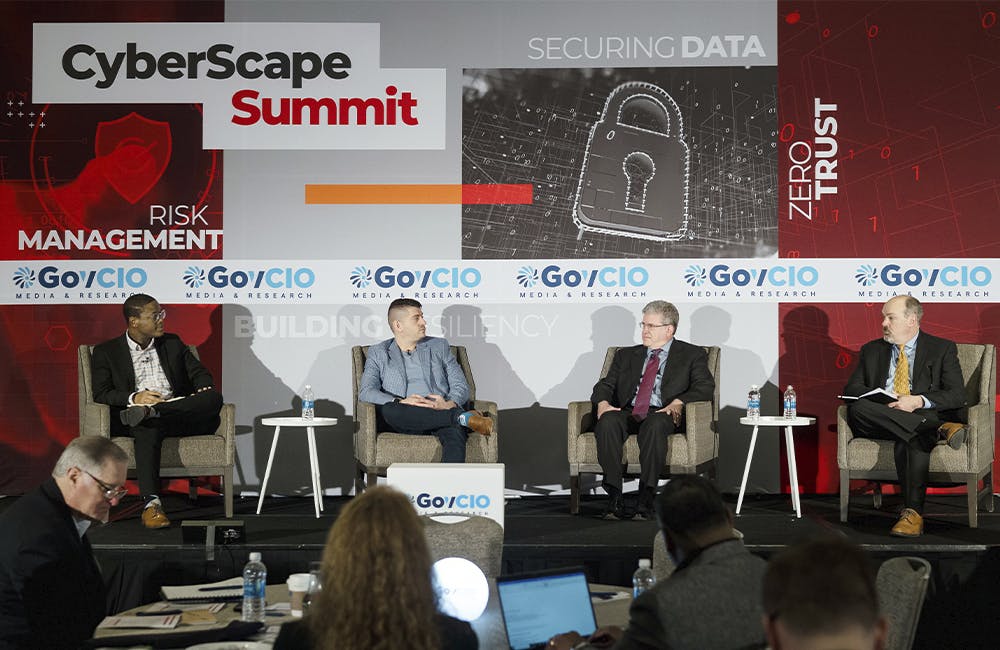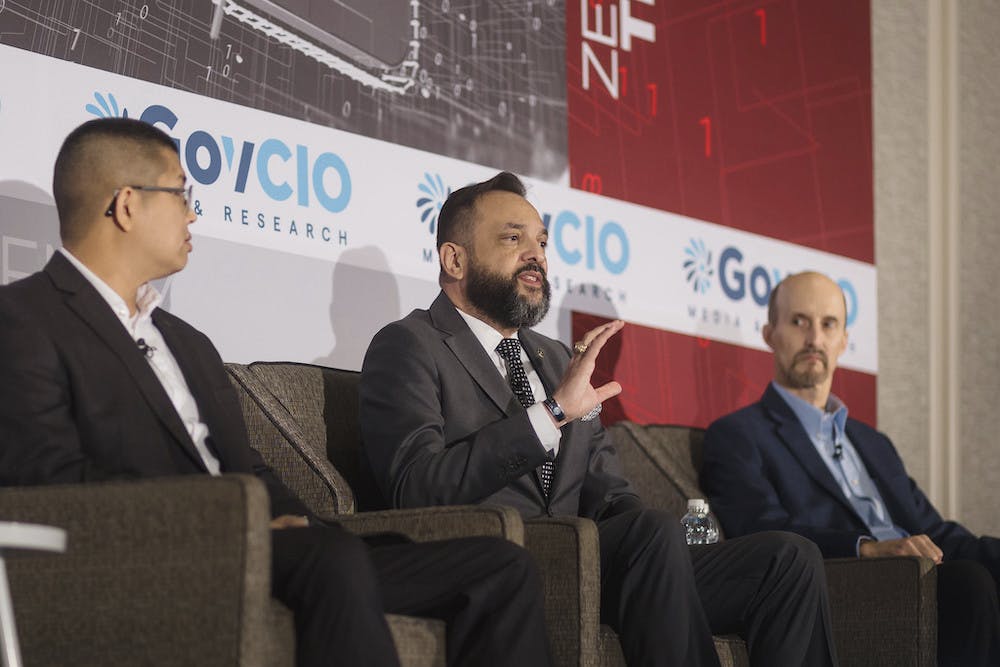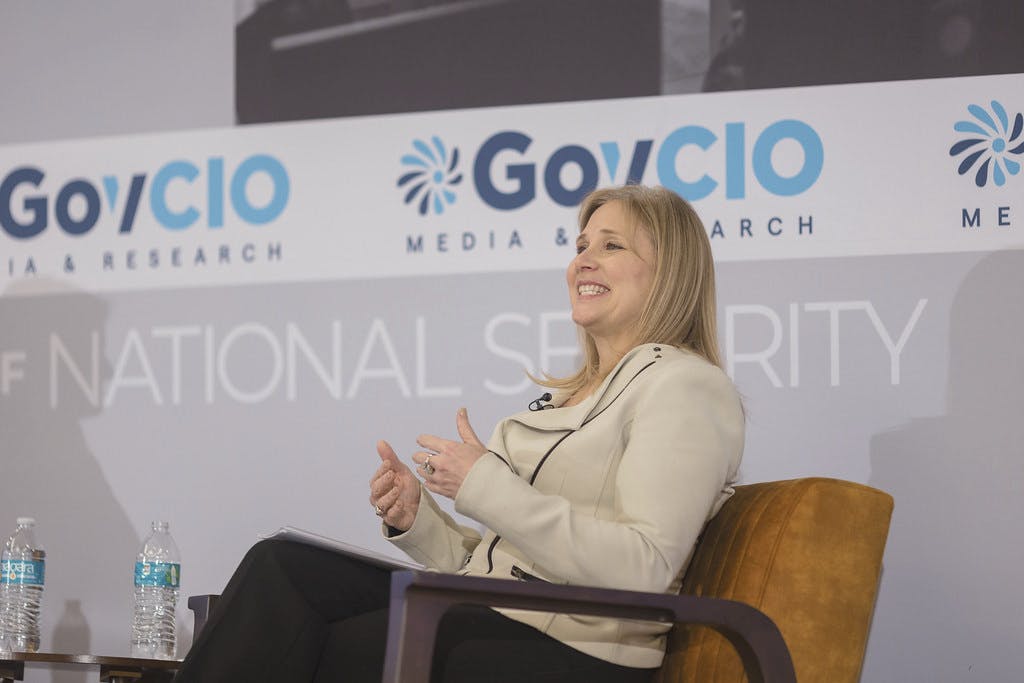Cloud Provides Foundation for Continuous Modernization at CMS
The agency is creating a culture around cloud technologies.

For many federal agencies, cloud migration is the process of modernizing. But for the Centers for Medicare and Medicaid Services, the cloud is a jumping point for making modernization a cultural value and mindset.
CMS Office of IT Deputy Director Bobby Saxon outlined this vision for modernization during CMS Convergence last week alongside various CMS organizations that highlighted the roles that cloud adoption have had in improving their lines of work.
Amid these initiatives, Saxon underscored that these efforts converge under the “new whole” that he wants to set for CMS — one that makes modernization a constant journey rather than a destination.
“My vision of a new whole is that we become a place where modernization is a mindset, not a project,” Saxon said. “We don’t modernize every five to 10 years. We modernize every day in everything that we do. … We see moving to the cloud as a foundation for modernization, not as the modernization.”
The Center for Clinical Standards and Quality Information Systems Group is one of CMS’ organizations using cloud as a vehicle to drive continuous improvements across the agency. Amid its modernization goals, cloud migration was a key step the center had to take to drive innovation across the enterprise, said Acting Deputy Director Brent Weaver.
To migrate to the cloud, Weaver said the group first updated its contracts, specifically its infrastructure contracts, to help maintain its legacy data center while moving to the cloud. From there, the center built out its hybrid-cloud environment and calculated cost management. In December 2020, the group moved its last system out of its data center and to the cloud, and from there started dismantling its legacy center.
Now that it runs on the cloud, the center has realized several benefits, one of them being improved value and cost savings.
“[Cloud] increased the value to the CMS quality-based programs for every dollar spent, and what I mean by that is that CCSQ is not in the business of IT; they’re in a business of improving the quality of health care,” said Acting Director Mark Plaugher. “Every dollar that we can save by creating efficiencies, on turning the crank on IT through things like automation … that same dollar we can actually spend it to enhance the quality improvement systems.”
Plaugher added that the cloud migration has also helped the center break away from the cycle of project-based modernization projects and has also improved time to market, system quality and resiliency, user experience and collaboration between policy and IT.
CCSQ is building off its cloud migration now by seeking contracting support for its infrastructure. More specifically, Plaugher said he’s looking for infrastructure support with CCSQ’s service center, cloud provisioning, cloud operations and ServiceNow development.
While CCSQ has been able to create a foundation for modernization with the cloud, CMS’s Office of Acquisition and Grants Management has sought to embrace continuous modernization of its work through its cloud-based CMS Acquisition Lifecycle Modernization (CALM).
Before CALM, the group ran its acquisition lifecycle through its Comprehensive Acquisition Management System (CAMS). CAMS ran on a traditional data center, was heavily reliant on commercial-off-the-shelf products and had disconnected processes, said Data Systems Director David Price. With CALM, the group wanted to leverage the cloud to centralize procurement information and provide actionable business processes that enable clear and efficient procurement decision-making.
“We wanted to create a solution that connected users and applications across CMS and focused on data-sharing,” Price said. “Enter data once and then reuse it during the entire lifecycle. Create a document once, then reuse it or a portion of it in future procurements.”
To realize this goal, the group pursued CALM as a collection of modules to address different areas of the contract acquisition lifecycle, said CALM Chief Product Owner Tony Pierce. These include requirements management, requisitions, portfolio management, purchase cards and a contract management system. These modules are based within an Appian low-code cloud platform. Moreover, Pierce said that CALM is driving a management approach that’s more centered in modern, user-centric and iterative methods.
“We co-design the application with our users. We have multiple sessions. We capture the requirements. We do mock-ups, present those mark-ups to users. We do demos every three weeks at the end of our sprint cadence. We ensure that we have a tool or mechanism so that we can get that feedback directly back from our users using the idea portal. We have a SAFe Agile approach,” Pierce said.
CMS OIT Information System Security Officer Ryan Coleman added that the CALM’s cloud infrastructure has reaped several benefits, including a variety of security monitoring tools, regular third-party penetration testing and g in-house engineering and support. It has also led OAGM toward developing and improving a CI/CD pipeline, and in the future CALM is looking to adopt robotic process automation and a vendor portal.
Now settled in the cloud, OAGM and CCSQ have grown to adopt Agile practices, human-centered design, DevSecOps and a foundation to grow and apply more emerging technologies.
“We moved to the cloud because it fuels innovation and creativity,” Saxon said. “It provides a platform for constant modernization.”
This is a carousel with manually rotating slides. Use Next and Previous buttons to navigate or jump to a slide with the slide dots
-

CISA, DOD Tackle Next Steps in Zero-Trust Implementation
Federal leaders discuss future strategies and culture impacts around successful zero trust implementation amid new organizational structures.
3m read -

'Balance' Needed in Hybrid Cloud Security, Interoperability
Federal officials from CISA and SOCOM say hybrid cloud cybersecurity needs a holistic approach to be successful.
4m read -

DOD Deputy CIO's Tech, Cyber Priorities for 2024
Leslie Beavers outlines how her office is enabling innovation for key efforts including zero trust, 5G connectivity, cloud and more.
3m read -

DISA HaC Looks to be the 'Warfighter's Cloud Provider of Choice'
DISA's Korie Seville said balancing needs and training are critical to the cloud mission across the Defense Department.
3m read








